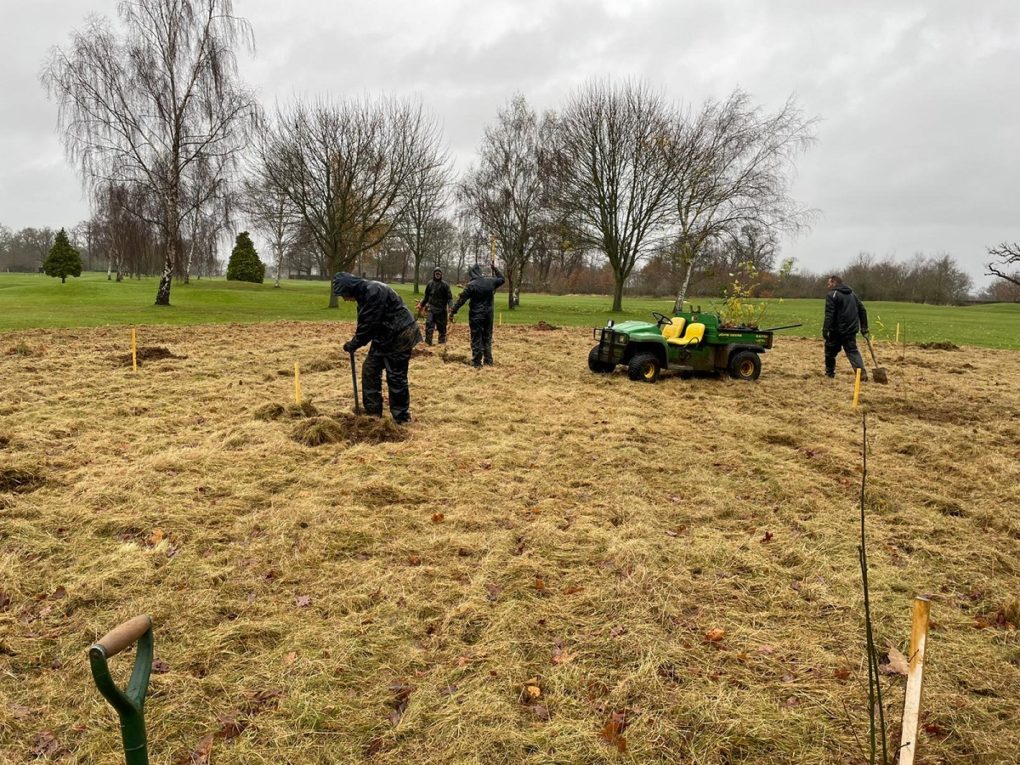
Hever Castle Golf & Wellbeing has been stepping up its environmental efforts by planting more trees and creating bat boxes.
As part of its 30th anniversary 30 oak trees will be planted and 70 trees planted as part of the Queen’s Green Canopy to mark her platinum jubilee.
The seventy trees include rowan, beech, willow and ash.
Head Greenkeeper Rob Peers said: “Having seen the initiative to celebrate the Queen’s Platinum Jubilee with such a worthwhile cause as tree planting, and celebrating the club’s 30th anniversary, it seemed only natural to bring the two together to further enhance the estate’s commitment to long term environmental sustainability.
“The species have been chosen to offer as diverse accumulation of benefits as possible to both the wonderful wildlife we have on the estate as well as our many visitors and members, from early spring pollinators for the insects, to winter berries for the birds.
“Some of the species will screen and protect offering excellent wildlife habitat, whilst others will give a wonderful show to enjoy at different times of the year. We are hoping to add our bat boxes to some of these newly planted areas to further still offer a safe haven.”
Watch the bat boxes being made:
[embedyt] https://www.youtube.com/watch?v=2jQVH_j8ADQ[/embedyt]
Rob and his team have also been creating bat boxes with three so far which are made out of oak.
The idea behind the bat boxes is to naturally reduce the number of crane flies which otherwise infest the greens. Bats can eat up to 3,500 insects a night.
Rob added: “At the very least it would be great to provide habitat for this natural insect control, it would help not only the bat population increase, but it will help the greenkeepers to protect the greens.
“Common Pipistrelle bats alone can have roosts of 200 bats on average, so if that’s 200 bats, eating 3,500 crane flies a night which could be carrying 300 eggs each, that’s potentially 210,000,000 crane flies that a single bat roost could eat in a single night.”
Rob said: “The tree planting alone will lower carbon footprint but the bigger picture will be long-term sustainable habitat with a synergy for both people and flora/fauna.”
Rob and his team have already created a wildlife area at the golf club. A natural spring was dug out to create a small area for animals to drink from and an exit stream was layered with blue clay to provide a shallower water habitat for invertebrates.
Houses for bugs and hedgehogs were created from materials recycled or found on site.
The hedgehog homes were made from recycled fertilizer drums and inspection panels made from old golf buggy windscreens.
Worn out tyres from mowers used on the greens were used to create a bug web and more fertiliser drums were transformed into a snake chamber.
Book your visit to Hever Castle & Gardens.
Within the grounds of the Hever Castle Estate, there are two opportunities for you to stay the night with us.
Hever Castle has played host to many important events and celebrations for over 600 years. In 1903 when William Waldorf Astor set about restoring Hever Castle to its former glory, he added the Astor Wing, to accommodate his family and guests, before creating a lake and the spectacular Italian Garden to house his impressive collection of ancient Greek and Roman statuary.
There are multiple places to eat & drink across the Hever Castle Estate. Select between the Castle & Gardens and Golf Club below to discover more.
Set in the mature grounds of the Hever Castle Estate, Hever Castle Golf Club is a 27 hole Kent golf course that will encourage and inspire all golf enthusiasts.
Set in the mature grounds of the Hever Castle Estate, the Wellbeing Centre consists of five smart treatment rooms.